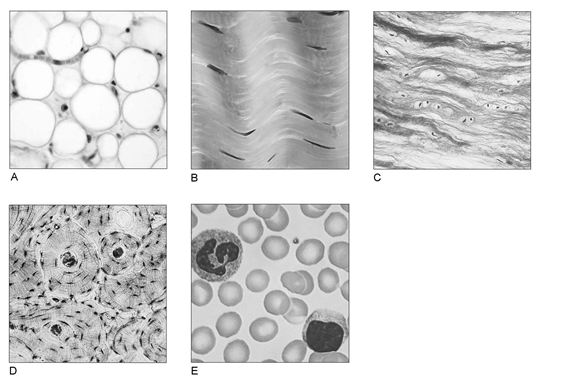Proteins form enzymes, transporters, channels, and many other critically important components of cells. Thus, it is essential that cells be able to regulate the amount of each protein that is available for use
What mechanisms are available to the cell for this regulation of protein levels?
What will be an ideal response?
Answer: Cells may increase or decrease the rate of transcription and translation. Transcription provides a "copy" of the instructions (mRNA) on how to produce a protein, and translation is the process that assembles the primary chain of amino acids from the directions on the mRNA. Cells can also remove existing proteins by enzymatic digestion. The protein is labeled by ubiquitin and then taken to a proteosome for destruction.
You might also like to view...
Using Figure 4.1, match the following:

1) Supports and protects; stores calcium.
2) Forms tendons and ligaments.
3) Supports and protects; insulates against heat loss; reserve source of fuel.
4) Provides tensile strength with the ability to absorb compressive shock.
5) Composed of cells in a fluid matrix.
The stalk connecting the pitutitary to the hypothalamus of the brain is the:
A) frenulum B) sella turcica C) infundibulum D) hypothalamic cervix
Identify the veins that combine to form the brachiocephalic vein
A) external jugular, internal jugular, vertebral, and subclavian veins B) external carotid, internal carotid, external jugular, and internal jugular veins C) dural sinuses D) dural sinus and carotid sinus E) occipital, vertebral, and dural sinuses
The Roman numeral assigned to each cranial nerve reflect
A. the sequence from posterior to anterior in which they emerge from the brain. B. the order of their discovery. C. the complexity of each nerve, with complex nerves having higher numbers. D. their importance, with highest numbers being the most important. E. the sequence from anterior to posterior in which they emerge from the brain.